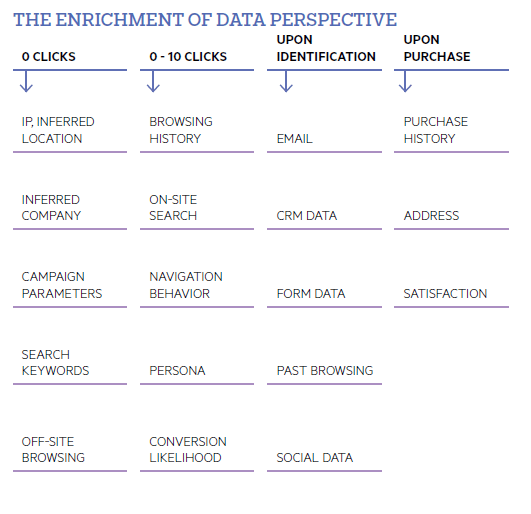How to Personalize Your Website According to the Customer Journey

Personalizing the web experience for your customers has never been more important. A growing number of businesses are adopting personalization, and an increasing number of users have come to expect it. In the first part of this series of posts, you’ll learn how personalization works and how you can get started.
Personalization, or creating a targeted experience for your users, can take a number of forms. Perhaps the most common way of thinking about it is based on implicit data, like geography or browsing history. Combined with explicit data, like a user’s profile preferences, one can try to assemble a picture of a customer. However, harnessing all that data at once can feel overwhelming.
This guide will walk you through a practical approach to gaining and using that data, employing a different type of personalization depending on where an individual is along the customer journey. This is important because the better you use data to personalize, the more data will be shared with you, creating a virtuous cycle.

The virtuous cycle of personalization
At Click Zero
You can learn a lot about your users even on their first visit. This is extremely important, because this will allow you to customize for the largest group of users—anonymous visitors. First-touch personalization reduces bounce rates and improves conversion from visitor to lead.
Here are some key data points you can glean from the moment your visitor sends their HTTP request to your server and lands on your site:
- IP address: This is an excellent starting point for identifying broad location characteristics. For example, certain companies or cities will often have similar IP addresses, allowing you to cater to that audience.
- Location can be further enhanced with geolocation or protocols like iBeacon
- Company IP addresses can be learned with the help of third party vendors
- Referring page or campaign parameters: By knowing where your user is coming from, you can customize for their interests. Did they come from a paid campaign on a B2B focused site? Tailor accordingly.
- Search keywords: The keywords someone enters into a search engine are a fantastic indicator for intent. Generally you can only get this from paid searches.
- Time of day: This won’t apply to everyone, but if your business has different offers based on the time of day, this is a useful data point for personalization.
While Browsing—Clicks Zero to Ten
You’ve already gotten a lot of data on your users from the moment they land on your site, but they’re still far from converted. Once a user has started to interact on your site, the best thing you can do is carefully observe their behavior. This opens up another world of personalization opportunities to help guide their journey.
- Browsing history: Both where your user visited and where they didn’t are valuable here as you seek to guess their intent. Look at the average page views per visitor and try to make sure there’s a clear path to conversion that takes no more than that many views.
- Time on site: The longer a visitor stays on your site the better. Regardless of how long they stay, the general rule of thumb is to shift from giving them information to showing them deals just past the halfway point of their stay.
- Persona/Lead score: These are all ways to group people based on their behavior on your site. Grouping people based on shared demographic information or signs of intent can help you form a more cohesive marketing strategy for each group.
- Predictive lead scoring is a term for using an algorithm to look at who converts and automatically make a grouping for you
Going From Anonymous to Identified
All of the above applies to anonymous users, but you’ll often have some identifiable information at your disposal as well. Combining this information will help you deliver the most robust personalization you can. This information could be any of the following:
- Profile/Form data
- User role
- CRM data
- Social data
This is generally information a visitor will have to volunteer. To gain this value you need to offer value of your own, whether it’s an interesting white paper or the convenience of a social login.
After a Purchase
A purchase, in addition to being wonderful for your business, is also an excellent data point for further personalization. Repeat clients are a valuable asset, and knowing a user’s purchase history, satisfaction ratings and other supplied information can be helpful in customizing your marketing materials.
Let’s Recap

This guide gives a broad sense of the opportunities for personalization, and we’ll continue to break it down as this series continues. To learn more about the topic, you can download the full guide here.

Barrett Coakley
Barrett Coakley is the Senior Manager, Products Marketing for the Progress Sitefinity Content Management System (CMS) and the Sitefinity DEC, a digital marketing analytics platform. Mr. Coakley has worked in various marketing positions for both startup and large technology organizations for over 20 years.

